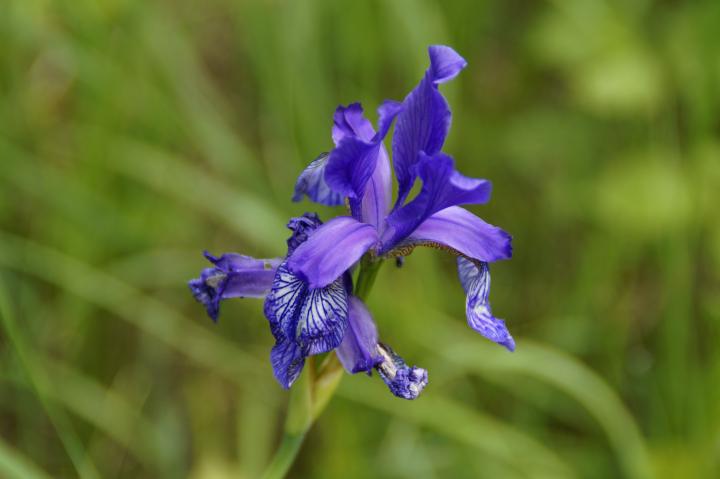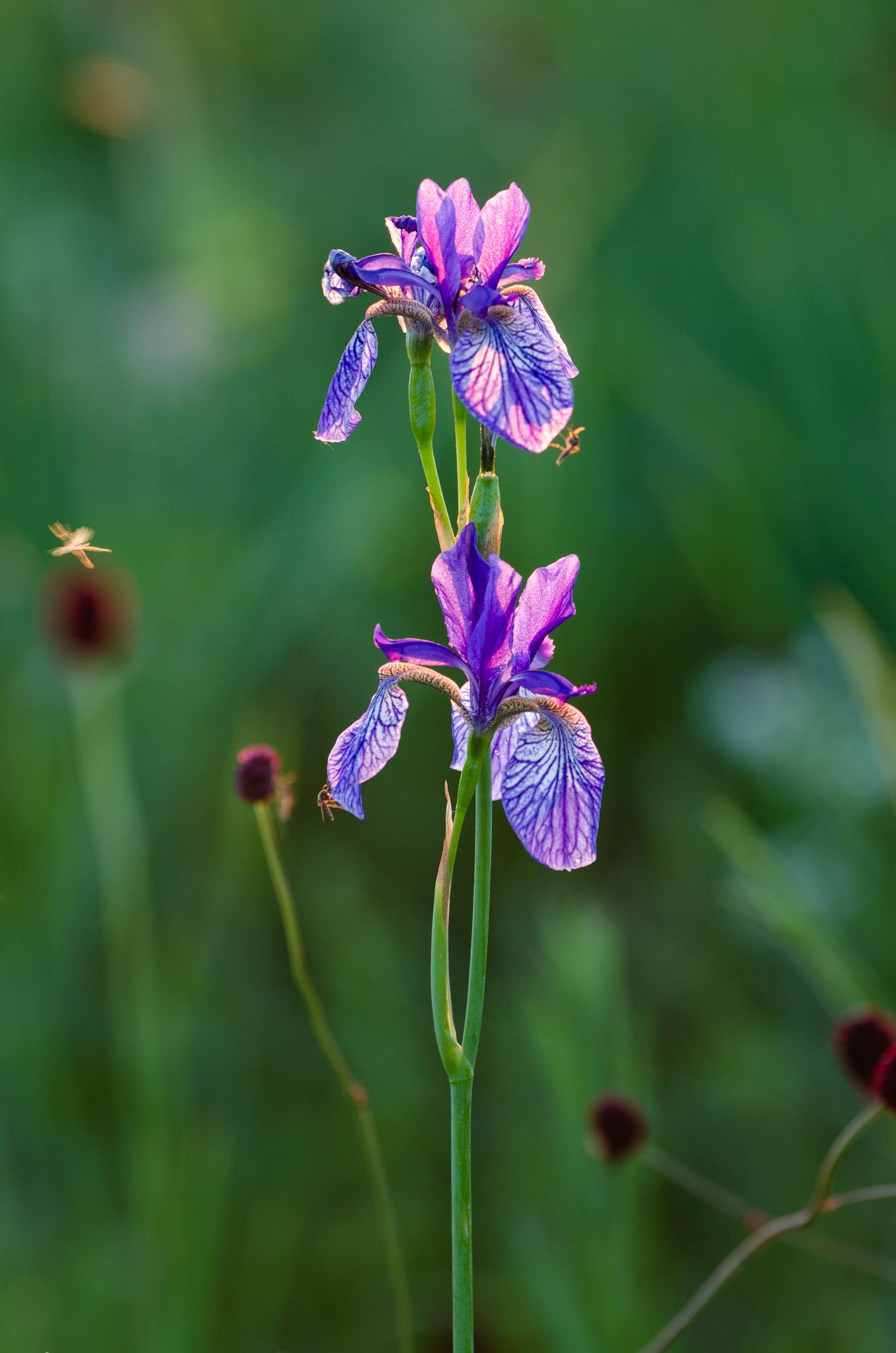






When you hear the word “iris,” do you see a big bearded beauty rising up above swordlike leaves? You’re thinking of the bearded iris (Iris germanica), a popular spring/summer garden star. The Siberian iris (I. sibirica), another flower entirely, is well worth your attention, too.
Easier to grow than I. germanica and needing very little care, I. sibirica has no beard but is beloved for its delicate flowers and soft, grasslike foliage.
The Siberian iris generally grows 2 to 4 feet tall; withstands wind, rain, and cold; and makes a lovely cut flower. Impressively, one mature plant can send out more than 20 stems of flowers at once, in a bloom season that lasts from late April to early summer. The Siberian iris quickly fills in spaces in a sunny border and works well at corners, too. Good companion plants are aquilegia, daisies, lupines, peonies, phlox, and pinks.
The Siberian iris grows well in USDA Zones 2 to 9. In northern regions, grow it in full sun. It performs reasonably well in light shade where seasons are warm. In extremely hot southern climates, grow it in a shady location. Although it will tolerate dry periods, for best performance, plant it with perennials that you water well all summer long.
Plant rhizomes with the crowns 1 inch below the soil level and cover them with soil—2 inches deep, if the soil is sandy. To avoid air pockets beneath the crown, make a small hill of soil in the center of the planting hole, place the rhizome on the hill with the roots spread around it, fill the hole with soil, and pack it tight. Keep evenly moist for 6 to 8 weeks after planting.

Photo: Anna bogush/shutterstock
To have Siberian irises in bloom for the longest period of time, include both early and late varieties in your garden. Here are a few examples:
Remove spent flowers after they bloom to keep seed heads from forming. In late fall, cut foliage to the ground and mulch well after the ground has frozen.
After a few years, when large clumps form, divide them to ensure continued bloom. Dig mature iris plants in the spring or early summer after they bloom or in the early fall, well before frost threatens. Loosen the soil carefully and pry the rhizomes loose with a rocking motion. Cut the rhizomes with a sharp knife, leaving each new piece with two fan divisions. Plant the divisions, cover with soil to a depth of 1 to 2 inches (as directed), and keep the new plants evenly moist for 6 to 8 weeks after planting.

Photo: Michael thaler/shutterstock
In Greek mythology, Iris is the name of the goddess of the rainbow. The iris bloom has been the symbol of monarchs and royal families throughout history. One of the earliest paintings of an iris is a fresco in King Minos’s palace on the Greek island of Crete. The palace dates from 2100 b.c.
The Bourbon kings of France, including Louis XIV, adapted the iris bloom on royal banners as the “fleur-de-lis.”
The iris is the state flower of Tennessee, and the fleur-de-lis is the emblem of the city of New Orleans, Louisiana.
Copyright © www.100flowers.win Botanic Garden All Rights Reserved